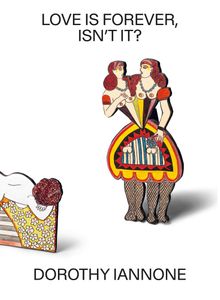| |||||||||||||||||||||||||
ARTIST MONOGRAPHS
|
|
in stock $35.00 Free Shipping UPS GROUND IN THE CONTINENTAL U.S. |
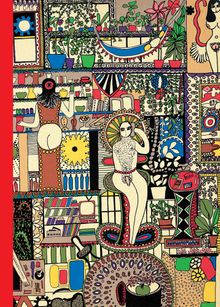 Dorothy Iannone
Dorothy Iannone
Published by Louisiana Museum of Modern Art.
Edited by Tine Colstrup, Lærke Rydal Jørgensen. Foreword by Poul Erik Tøjner, Tine Colstrup. Text by Barbara Casavecchia, Dorothy Iannone.
For six decades, Dorothy Iannone (born 1933) has developed an iconography that is at once epic and intensely personal. Often her works bear a close resemblance to graphic novels: hand-lettered texts and images work together to tell the story, bluntly and with humor in both verbal and visual details. Liberated sexuality and romantic relations are central themes. Iannone’s erotic scenes stem from historical representations of ecstatic unions across times, cultures and religions, with references to antiquity, Greek vases, Egyptian art, Roman and Pompeian murals, the Kama Sutra and Tantra, Icelandic sagas, Christianity, Buddhism, world literature and film history. Serving as muses, the artist’s lovers appear in her narratives: several works feature the artist Dieter Roth, who was Iannone’s partner from 1967 to 1974.
This richly illustrated catalog presents some of the artist’s most important work, alongside an introduction by Italian art historian Barbara Casavechia, the artist’s own writing and an illustrated biography.
PUBLISHER
Louisiana Museum of Modern Art
BOOK FORMAT
Paperback, 9.5 x 13.25 in. / 108 pgs / 80 color / 20 bw.
PUBLISHING STATUS
Pub Date 3/28/2023
Active
DISTRIBUTION
D.A.P. Exclusive
Catalog: SPRING 2023 p. 28
PRODUCT DETAILS
ISBN 9788793659568 TRADE
List Price: $30.00 CAD $42.00 GBP £26.00
AVAILABILITY
Out of stock
STATUS: Out of stock Temporarily out of stock pending additional inventory. |
![Dorothy Iannone: The Story of Bern, [or] Showing Colors](https://s.turbifycdn.com/aah/artbook/dorothy-iannone-the-story-of-bern-or-showing-colors-110.jpg) Dorothy Iannone: The Story of Bern, [or] Showing Colors
Dorothy Iannone: The Story of Bern, [or] Showing Colors
Published by JRP|Editions.
Edited by Clément Dirié. Introduction by Dorothy Iannone. Text by Frédéric Paul.
As much as Love and Eros have defined my work since its beginnings, so too has censorship, or its shadow, accompanied it," recalls Dorothy Iannone (born 1933) in her introduction to this facsimile publication of her legendary The Story of Bern, [or] Showing Colors. First published by Iannone and her then companion Dieter Roth in 1970, in an edition of 500, the book documents the censorship of Iannone's work The (Ta)Rot Pack (1968–69) and the subsequent removal of all his works by Roth, from a collective exhibition at the Kunsthalle Bern.
For his exhibition titled Freunde, Friends, d'Fründe, legendary curator Harald Szeemann invited Karl Gerstner, Roth, Daniel Spoerri and André Thomkins to exhibit artist friends; Roth chose Iannone. The censorship of Iannone, and Roth's protest, eventually led to Harald Szeemann's resignation as the director of the institution. Telling the story of this act of censorship as well as the context of the exhibition in Bern and its iteration in a non-censored version in Düsseldorf, The Story of Bern is emblematic of Iannone's distinctive, explicit and comic-book style, and of her openness about sexuality and the strengthening of female autonomy.
PUBLISHER
JRP|Editions
BOOK FORMAT
Paperback, 8.5 x 9 in. / 74 pgs / 2 color / 70 bw.
PUBLISHING STATUS
Pub Date 1/28/2020
Active
DISTRIBUTION
D.A.P. Exclusive
Catalog: SPRING 2020 p. 119
PRODUCT DETAILS
ISBN 9783037645543 TRADE
List Price: $55.00 CAD $75.00 GBP £25.00
AVAILABILITY
In stock
in stock $55.00 Free Shipping UPS GROUND IN THE CONTINENTAL U.S. |
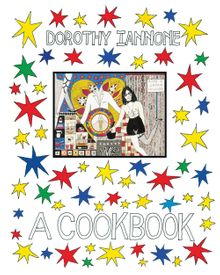 Dorothy Iannone: A Cookbook
Dorothy Iannone: A Cookbook
Published by JRP|Ringier.
Edited by Clément Dirié.
Created in 1969, when she was living with Swiss artist Dieter Roth, the Cookbook is a perfect example of how Iannone mixes daily life, creativity and thought, culminating in her vision of cooking as an outlet for both eroticism and introspection. A real book of recipes full of visual delights, the Cookbook contains densely decorated pages with patterned designs, packed text and vibrant colors. Personal sentences are interspersed among the lists of ingredients, revealing the exultations and tribulations of her life between the lines of recipes. Filled with wit, wordplay and idiosyncratic thoughts—”At least one can turn pain to color” accompanies the recipe for gazpacho; “Dorothy’s spirit is like this: green and yellow,” is written next to the ingredients for lentil soup—the Cookbook constitutes a self-portrait of the artist as a cook and a lover. This publication is a facsimile of the 1969 original
PUBLISHER
JRP|Ringier
BOOK FORMAT
Flexi, 9.5 x 11.75 in. / 60 pgs / illustrated throughout.
PUBLISHING STATUS
Pub Date 3/19/2019
Out of print
DISTRIBUTION
D.A.P. Exclusive
Catalog: SPRING 2017 p. 46
PRODUCT DETAILS
ISBN 9783037644881 TRADE
List Price: $40.00 CAD $49.95
AVAILABILITY
Not available
STATUS: Out of print | 00/00/00 For assistance locating a copy, please see our list of recommended out of print specialists |
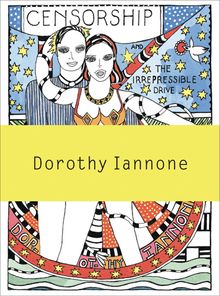 Dorothy Iannone: Censorship and the Irrepressible Drive Toward Love and Divinity
Dorothy Iannone: Censorship and the Irrepressible Drive Toward Love and Divinity
Published by JRP|Ringier.
Edited by Heike Munder. Text by Maria Elena Buszek, Dorothy Iannone, Heike Munder.
PUBLISHER
JRP|Ringier
BOOK FORMAT
Paperback, 8 x 10.75 in. / 160 pgs / 58 color / 31 bw.
PUBLISHING STATUS
Pub Date 2/24/2015
Active
DISTRIBUTION
D.A.P. Exclusive
Catalog: SPRING 2015 p. 129
PRODUCT DETAILS
ISBN 9783037643785 TRADE
List Price: $59.95 CAD $79.00 GBP £37.00
AVAILABILITY
In stock
in stock $59.95 Free Shipping UPS GROUND IN THE CONTINENTAL U.S. |
 Dorothy Iannone: This Sweetness Outside of Time
Dorothy Iannone: This Sweetness Outside of Time
Published by Kerber.
Text by Jan-Frederik Bandel, Michael Glasmeier, Annelie Lütgens, Susanne Rennert. Interview by Maurizio Cattelan.
PUBLISHER
Kerber
BOOK FORMAT
Paperback, 9 x 10.5 in. / 184 pgs / 205 color / 55 bw.
PUBLISHING STATUS
Pub Date 9/30/2014
Out of print
DISTRIBUTION
D.A.P. Exclusive
Catalog: FALL 2014 p. 124
PRODUCT DETAILS
ISBN 9783866789241 TRADE
List Price: $50.00 CAD $67.50
AVAILABILITY
Not available
STATUS: Out of print | 00/00/00 For assistance locating a copy, please see our list of recommended out of print specialists |
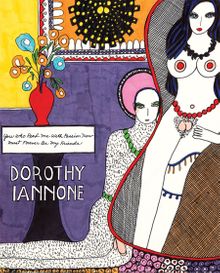 Dorothy Iannone: You Who Read Me With Passion Now Must Forever Be My Friends
Dorothy Iannone: You Who Read Me With Passion Now Must Forever Be My Friends
Published by Siglio.
Edited by Lisa Pearson. Text by Trinie Dalton.
Associated with Fluxus through her close friendships with Emmett Williams, Robert Filliou and Ben Vautier, as well as most well-known for her relationship with Dieter Roth, Dorothy Iannone (born 1933) nevertheless has her own distinct aesthetic style and substantive concerns. Her first major museum show in the U.S. came when she was 75 in 2008 at the New Museum, shortly after her “orgasm box” titled “I Was Thinking of You” was included in the Whitney Biennial in 2006, and she has recently attained more recognition with solo shows at the Camden Arts Centre, Palais de Tokyo and the Berlinischer Galerie.
PUBLISHER
Siglio
BOOK FORMAT
Paperback, 7.25 x 9 in. / 320 pgs / 95 color / 210 bw.
PUBLISHING STATUS
Pub Date 11/30/2014
Active
DISTRIBUTION
D.A.P. Exclusive
Catalog: FALL 2014 p. 22
PRODUCT DETAILS
ISBN 9781938221071 TRADE
List Price: $45.00 CAD $60.00 GBP £40.00
AVAILABILITY
In stock
in stock $45.00 Free Shipping UPS GROUND IN THE CONTINENTAL U.S. |
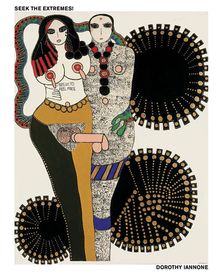 Dorothy Iannone: Seek The Extremes!
Dorothy Iannone: Seek The Extremes!
Published by Verlag für moderne Kunst.
Essays by Barbara Vinken and Sabine Folie.
PUBLISHER
Verlag für moderne Kunst
BOOK FORMAT
Hardcover, 8 x 10 in. / 80 pgs / 40 color.
PUBLISHING STATUS
Pub Date 10/15/2006
Out of print
DISTRIBUTION
D.A.P. Exclusive
Catalog: FALL 2006 p. 134
PRODUCT DETAILS
ISBN 9783938821480 TRADE
List Price: $35.00 CAD $40.00
AVAILABILITY
Not available
STATUS: Out of print | 00/00/00 For assistance locating a copy, please see our list of recommended out of print specialists |
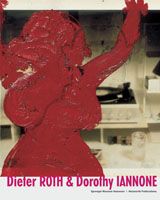 Dieter Roth & Dorothy Iannone
Dieter Roth & Dorothy Iannone
Published by Holzwarth Publications.
Essays by Dietmar Elger, Oliver Koerner von Gustorf and Bernadette Walter. Interview by Dirk Dobke with Dorothy Iannone.
PUBLISHER
Holzwarth Publications
BOOK FORMAT
Hardcover, 8.75 x 10.75 in. / 226 pgs / 248 color.
PUBLISHING STATUS
Pub Date 3/1/2006
Active
DISTRIBUTION
D.A.P. Exclusive
Catalog: SPRING 2006 p. 103
PRODUCT DETAILS
ISBN 9783935567275 FLAT40
List Price: $45.00 CAD $60.00
AVAILABILITY
In stock
in stock $45.00 Free Shipping UPS GROUND IN THE CONTINENTAL U.S. |
